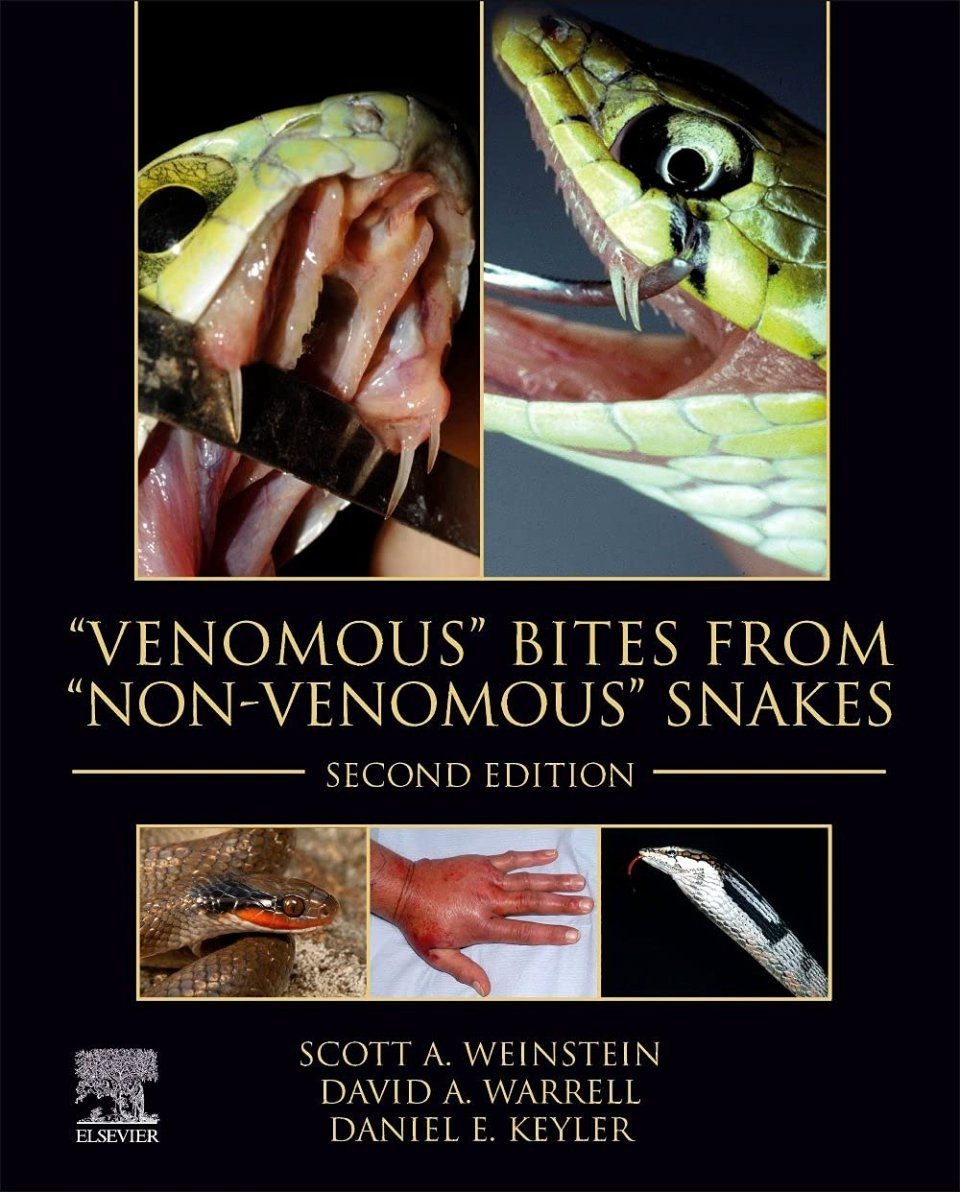| Authors | Scott A Weinstein, David A. Warrell & Daniel E. Keyler |
| Language | English |
| ISBN | 9780128227862 |
| Publisher | Elsevier |
| Pages | 788 |
| Size | 196 x 243 x 51 mm |
| Format | Hardcover |
| Images | Images, illustrations and tables |
| Year published | 2023 |
"Venomous" Bites from "Non-Venomous" Snakes, Second Edition thoroughly examines the potential hazards associated with bites by non-front-fanged snakes (popularly, but inaccurately, called "rear-fanged snakes"). This diverse group contains approximately 80% of living snake species (approximately 2,900 species). A large proportion of these snakes were previously assigned to the family Colubridae but, as a consequence of expanding systematics investigations, have been split into multiple families and subfamilies.
Many of these snakes produce venoms or oral secretions that contain toxins and other biologically active substances. A large variety of non-front-fanged snakes figure in the pet industry, yet little documented information or formal study of their potential medical importance has been published. Therefore, although the possible medical importance of many of these species has been subjected to speculation since the mid-19th century, there is a limited amount of useful descriptive information regarding the real hazard (or lack thereof) of this wide variety of snakes.
The first edition of this book provided "one-stop shopping" by offering information regarding their possible toxicity and clinical relevance as well as recommendations for medical management of their bites. The second edition expands and updates the content with detailed information about the effects and medical management of bites by a broad representation of non-front-fanged species. The hypothetical venomous nature of some lizards considered as non-venomous such as the Komodo monitor or dragon and their allies, as well as the medical effects of their bites, is also examined.
The dynamic taxonomy of advanced snakes is updated, and the bases for some of these fluid changes are discussed. Likewise, terminology is also updated in order to reflect the ongoing debates regarding the definition of "venom" and the balanced reinforcement of nonmedical criteria used to define the biological basis of the term "venomous."
Table of Contents
1. An overview of the artificial assemblage, the Colubridae
1.1 An overview of shifting classification: higher phylogeny and reassignment of non-front-fanged snakes
2. Differences between oral gland secretion and associated delivery systems of front-fanged and non-front-fanged snakes
2.1. Basic considerations regarding gland structure and function
2.2. Overview of hypotheses for the evolution of venom-delivery systems
2.3. Theories considering the evolution of canaliculated fangs and enlarged grooved teeth
2.4. ‘Duvernoy’s glands’ and venom glands: troublesome terminology; a question of semantics?
3. A summary of the toxinology of non-front-fanged snake venoms and other oral secretions
4. Medically significant bites by non-front-fanged snakes
4.1. Typical features of documented cases and evidence-based risk
4.2. Some representative genera: typical features of bites and an overview of their natural history and toxinology
4.3. Life-threatening and fatal cases and assessment of evidence-based risk
4.4. Aberrant cases and representative cases without clear etiology: a critical assessment of risk
4.5. Pitfalls noted in documented cases: differentiating perceived versus evidence-based risk
4.6. Recommendations for management of medically significant bites by non-front-fanged snakes
5. Summary and conclusions
Appendix A. Representative unverified cases of medically significant non-front-fanged snake bites posted on the internet
Appendix B. Representative lethal potency ranges and yields of duvernoy’s secretions and venoms from selected non-front-fanged snakes
Appendix C. Strategies of management of gram-negative septicemia: are there lessons to be learned for managing venom-induced coagulopathies?
Appendix D. Kegal considerations regarding private ownership of venomous snakes (including hazard level 1 non-front-fanged snakes): an opinionated essay
Appendix E. List of examined specimens
Glossary
Additional recommended reading
A call for cases
Bibliography















